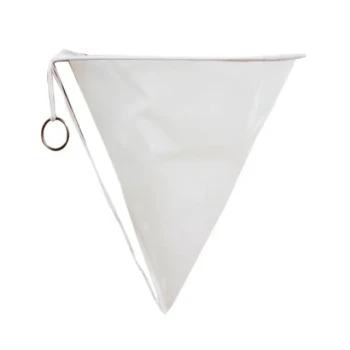The amount of propolis you can collect from a single beehive varies significantly based on your harvesting method. While incidental collection during routine maintenance might yield 50 to 150 grams per season, using specialized equipment like a propolis trap can dramatically increase this to one kilogram or more from a single, productive hive.
A hive's propolis output is not a fixed number; it's a direct result of your collection strategy. Shifting from passive scraping to active trapping can increase your yield by more than tenfold, transforming propolis from a minor byproduct into a deliberate harvest.

What Determines Propolis Yield?
The wide range in potential harvest comes down to two key factors: the natural behavior of the bees and the methods a beekeeper employs to encourage and collect the propolis.
Standard Scraping vs. Specialized Traps
Most beekeepers collect small amounts of propolis simply by scraping it from frames and hive bodies during inspections. This incidental collection typically results in the lower-end yield of 50 to 150 grams per year.
A propolis trap, however, is a purpose-built tool. It is a plastic mat or screen with small gaps, designed to be placed directly under the hive lid.
The Role of Bee Behavior
Bees instinctively use propolis, a resinous substance collected from tree buds, to seal cracks and drafts in the hive. Crucially, they also use it to block out unwanted light.
A propolis trap exploits this behavior. The gaps in the trap allow light to filter into the top of the hive, which the bees perceive as a structural flaw. They work diligently to seal these gaps, filling the entire trap with propolis.
How to Maximize Your Harvest
To move beyond an incidental harvest, you must intentionally manage the hive for propolis production.
Using a Propolis Trap
The most effective way to maximize yield is to use a propolis trap or mat. Once placed on top of the frames, the bees will begin to fill it.
When the trap is full, the beekeeper removes it. The propolis, which is brittle when cold, can then be easily separated from the trap for cleaning and processing.
Understanding the Trade-offs and Best Practices
While maximizing your propolis harvest is achievable, it requires careful consideration to ensure the health of your colony and the quality of the final product.
Prioritizing Hive Health
Remember that bees produce propolis for a reason—to protect their colony. While a trap encourages overproduction, ensure the hive remains structurally sound, well-ventilated, and protected from the elements.
The Critical Risk of Contamination
Propolis can absorb chemicals used within the hive. It is essential to avoid harvesting propolis from hives treated with chemical miticides or other medications.
Contaminated propolis is unsuitable for human use and loses its value. Always prioritize harvesting from treatment-free hives to ensure a pure, high-quality product.
Making the Right Choice for Your Goal
Your approach to propolis collection should align with your overall beekeeping objectives.
- If your primary focus is honey production: Plan on a small, incidental harvest of 50-150g from scraping during normal hive maintenance.
- If your primary focus is a dedicated propolis harvest: Invest in propolis traps for each hive and expect yields that can exceed 1kg per colony, per season.
By understanding the bees' natural instincts, you can effectively choose the right method to meet your propolis harvesting goals.
Summary Table:
| Harvesting Method | Typical Annual Yield | Key Factor |
|---|---|---|
| Incidental Scraping | 50 - 150 grams | Collected during routine hive inspections. |
| Using a Propolis Trap | 1 kilogram or more | Actively encourages bees to overproduce to seal gaps. |
Ready to scale your propolis production?
As a commercial beekeeper or equipment distributor, consistent, high-quality propolis is a valuable revenue stream. HONESTBEE supplies the durable, effective propolis traps and other beekeeping supplies you need to maximize your harvests efficiently and profitably.
Let's discuss your commercial needs. Contact our wholesale team today to get the right equipment for your operation.
Visual Guide

Related Products
- Economy Small Scale Honey Dryer Dehumidifier Thickening Machine
- Professional Cone-Shaped Honey Filter with Reinforced Steel Ring
- Stainless Steel Double Layer Honey Strainer Sieve Filters
- Plastic Hand Crank 2 Frame Honey Extractor Low Price
- HONESTBEE 6 Frame Three Use Electric Honey Extractor for Beekeeping
People Also Ask
- What are the advantages of a condensation honey dryer? Boost Quality & Yield for Your Apiary
- How to remove humidity from honey? Protect Your Harvest from Fermentation
- How to reduce moisture level in honey? Preserve Quality and Prevent Fermentation
- Can you dehumidify honey? A Beekeeper's Guide to Preventing Fermentation
- How can the moisture content of honey be reduced? A Guide to Safe, Effective Drying Methods



















